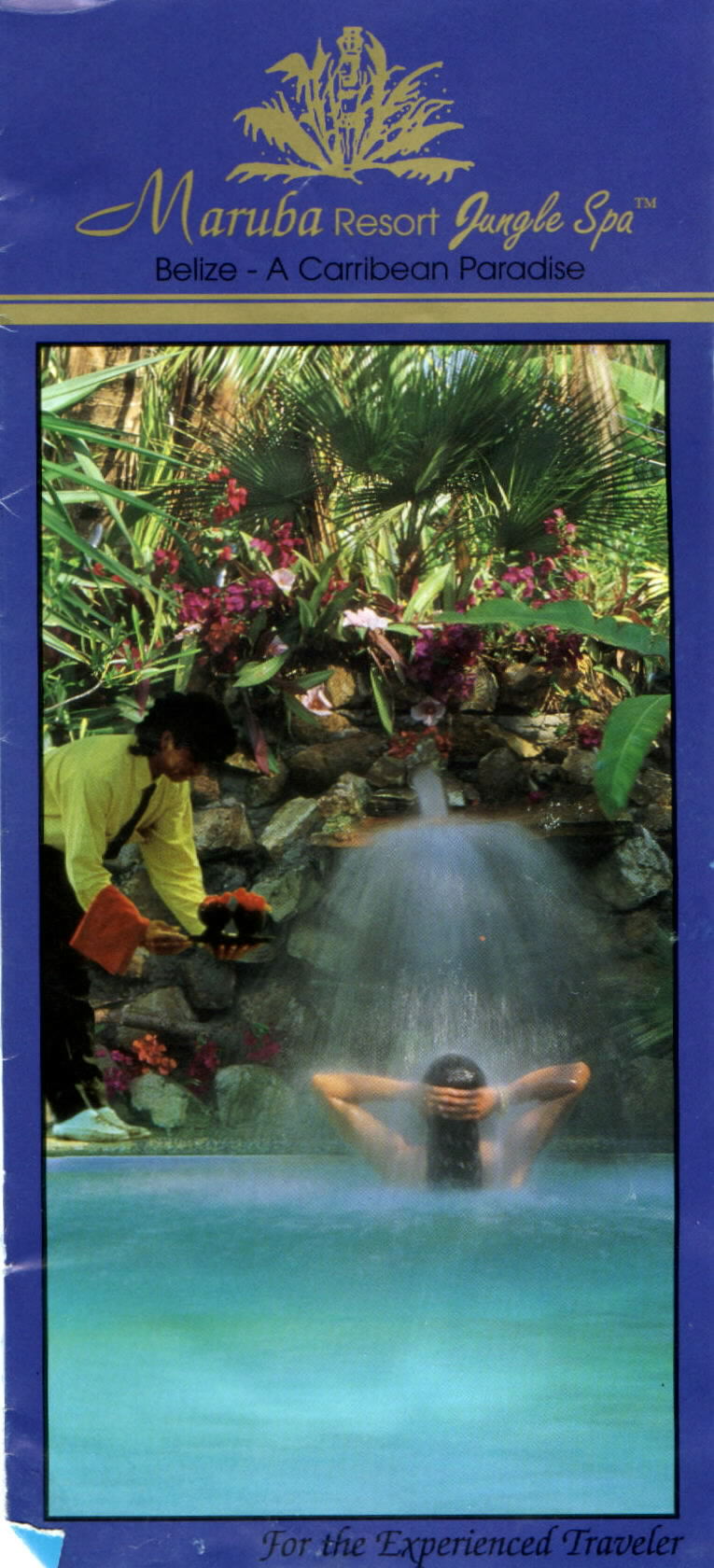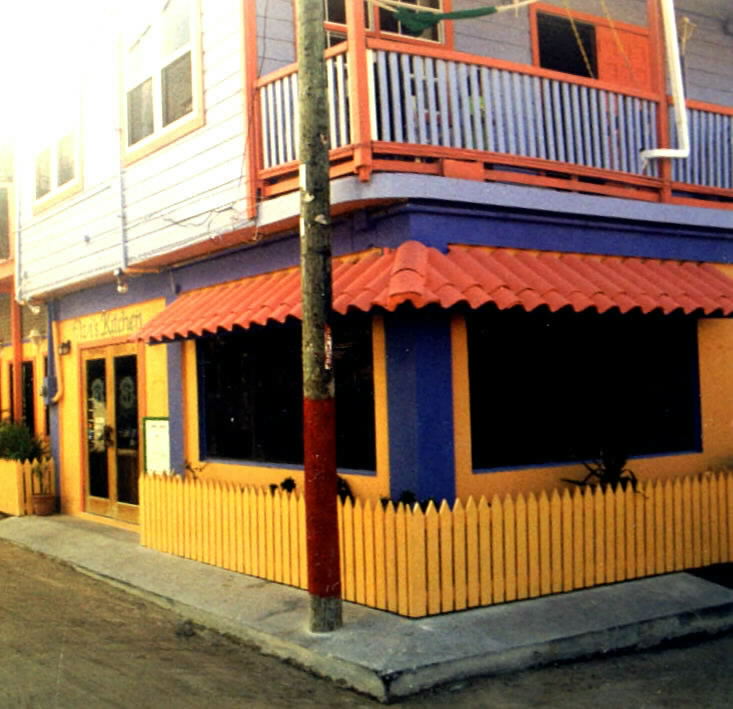Part 3: Excursion to Altun Ha
I woke this morning just before sunrise, but could not get myself pulled together in time to run outside and get some sunrise photos. No matter, there would be other mornings. By 8:30, we were ready to meet Carlos aboard Suya to begin our Mayan adventure. By the time Suya made its appointed stops at various hotel piers along the Ambergris Caye shore, we had a complement of 20 or so passengers, most of whom were American (most from Oklahoma City, it seems) but some of whom were Spanish-speaking.
The first stop on our tour, after cruising along shallow, crystal blue seas just offshore, were the mangrove islands just south of Ambergris Caye, where we received a primer on basic mangrove species. From there, we zoomed across to the mainland of Belize to the mouth of the Northern River, and slowly motored upriver, regaled by Carlos' naturalist's tour of the mangrove ecosystem. He pointed out various flora and fauna, including bromeliads, epiphytes, indigenous tree and animal life. My favorite tree is nicknamed the "tourist tree," because of its red, peeling bark. Carlos also also told of the game hunters tracked in this swamp, including the famed paca (aka gibnut), a large spotted rodent also known as "Royal Rat" because Queen Elizabeth II dined on this delicacy during a visit to Belize many years before.
After about 4 miles of stately progress up the river, we docked at a rickety pier in the tiny settlement of Bomba Village, consisting of a few raised, thatched cottages in which 50 inhabitants eke out an existence with subsistence agriculture and sales of native woodcarvings. There were a few lean-tos serving as gift shops, and a very rudimentary pay toilet guarded by a girl no more than 9 years old. After stretching our legs and checking out the merchants' wares, we boarded a yellow school bus for the next leg of our journey.
Throughout our bus trip, Carlos continued his exposition on the wonders of Belize. The pitted, dusty, rocky road improved somewhat when we reached the village of Maskall. Here, the road became the Old Northern Highway, which had once been part of the Pan American Highway. It was during construction of the Pan Am Highway that the ruins at Altun Ha were discovered. Workers were paving the road with limestone blocks they were bringing from the ruins. A realization of what they were doing brought a quick end to that practice.
Along the way, we stopped at the home of the bus driver's mother, the local baker, who gave us a batch of fresh, warm banana bread. We washed it down with Belikin, NOT a classic combination, but sometimes you just have to make do. The road improved as we neared Altun Ha, marked by small, grass covered mounds alongside, which we learned later are among the hundreds of Mayan sites in the area. Eventually, we pulled into the national park itself, where a caretaker should have been holding court under the roof of an open pavilion.
Altun Ha is considered a minor commercial site, rather than a governmental or religious site. The large, pyramid-shaped structures, which appear to be vast staircases (with giant-sized steps) made of limestone (though many of them are still covered with jungle growth, not having been fully excavated) border a lush, grassy plaza set exactly 2 meters above sea level. We fought off hordes of hungry mosquitos as Carlos took us on a tour, climbing many of the ruins and gaining a spectacular view over the treetops, and listening to his exposition of Mayan life and culture. The Mayans had developed an advanced society, while 12th century Europeans were eking out a filthy, brutish life in the Dark Ages. The structures they built were beautiful in their symmetry, awesome in their size, and amazing in their withstanding the encroachments of time and nature.
Once our circuit of the ruins was completed, we re-boarded our school bus and headed for Maruba Resort and Jungle Spa for a late lunch. Maruba is a unique resort in the middle of nowhere, carved out of the jungle, and attracting an apparently wealthy clientele to its manicured stone paths and rioting foliage. The common rooms had an English Empire look to them, with tiled floors, animal prints, mosaics, stucco and stick structures.
We climbed a rickety iron spiral staircase to an aerie which served as our private outdoor dining room, where Rick and I were joined by Judy, an expatriate Texan, for lunch. While Rick and Judy played it safe with broiled black snapper, I decided to brave the stewed gibnut (paca) of QEII fame. My daring was rewarded by a tasty, savory meal (tasting more like pork than chicken), which went down easily with the hibiscus-festooned rum punches. After lunch, I enjoyed a couple of dips in the Maruba pool, which had a small waterfall at one end. The bartender brought one rum punch after another, and I soon cared little that I had neither a towel nor a hairbrush with which to groom myself after swimming. The day's adventures ended with a bus ride back to the boat, then a journey out the Northern River and across the sea to Ambergris Caye.
All of that sun and water left us tired but hungry, so we cleaned up and walked down Pescador Drive to the acclaimed Elvi's Kitchen. The outside is painted in wild island colors (iris, marigold, orange) while the inside has a sand floor and thatched roof. Our overly-friendly waiter Dennis served us well, and the food at Elvi's lived up to its billing. It was true Mayan island fare, starting with black bean soup and red snapper; mine was cooked with tomatos, onions and peppers in a plantain leaf. Tired as we were, after dinner we simply crashed, falling asleep on another soft Caribbean night with onshore breezes clattering through the palms and wafting through our open door.



